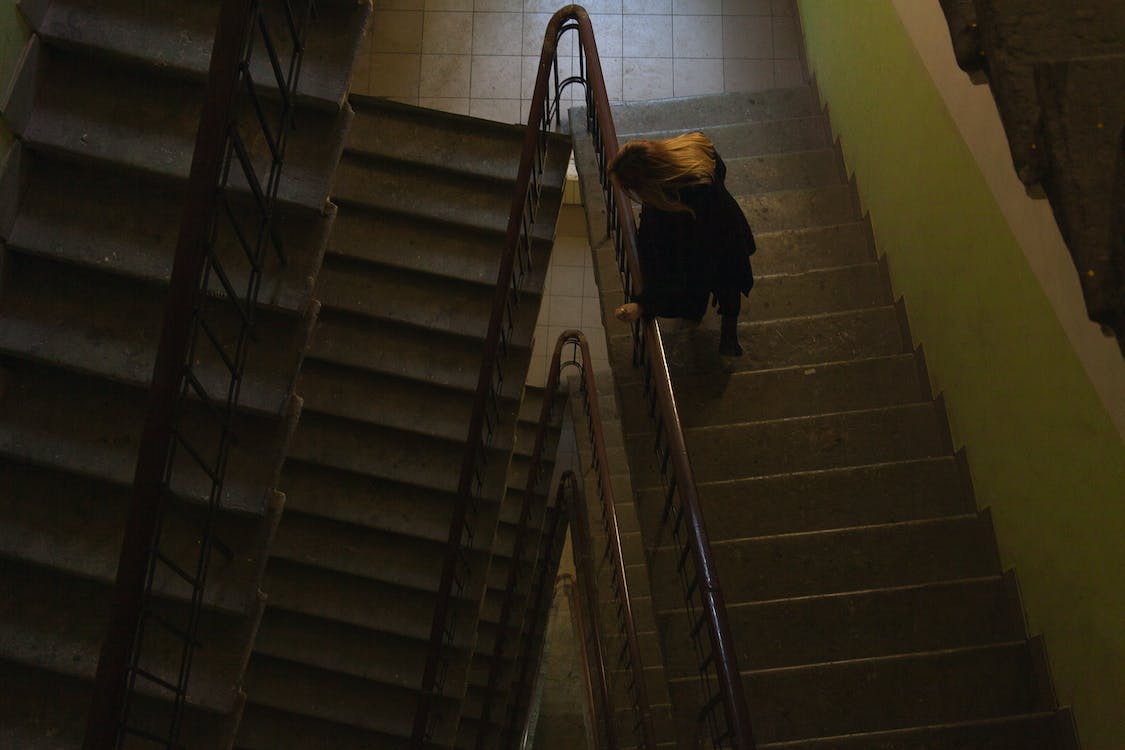If you’ve taken a tumble down the stairs, you may be wondering if it’s serious. Well, the answer to this is: it depends. Here are a few things to keep in mind when assessing the situation.
First, take note of where you landed. If you fell headfirst, it’s more likely that you’ve suffered a serious injury. However, if you landed on your feet or bottom, the chances of a serious injury are lower.
Next, assess your pain level. If you’re in a lot of pain, it’s more likely that you’ve sustained an injury. However, if the pain is manageable, it’s less likely that you’ve done serious damage.
Finally, check for any visible injuries. If you see any bruising or swelling, it’s possible that you’ve suffered a fracture or other serious injury. However, if there are no visible injuries, it’s less likely that you’ve done serious damage.
If you’re still unsure whether or not your fall was serious, it’s best to err on the side of caution and seek medical attention. A doctor will be able to properly assess your situation and give you the best course of treatment.
Let’s take a deeper look.
Serious Injuries
If you’ve fallen headfirst, it’s more likely that you’ve suffered a serious injury. This is because falling headfirst can lead to a traumatic brain injury (TBI). A TBI can cause a variety of symptoms, including headaches, dizziness, nausea, and vomiting. If you experience any of these symptoms, it’s important to seek medical attention right away.
Falling headfirst can also lead to a neck or spine injury. These types of injuries can cause paralysis, so it’s important to seek medical attention immediately if you experience any numbness or tingling in your extremities.
If you’ve landed on your feet or bottom, the chances of a serious injury are lower. However, this does not mean that you’re in the clear. You could still have suffered a broken bone or reduced range of motion after the fall, for instance. It’s important to seek medical attention if you suspect that you’ve suffered any type of injury.
Pain Level
If you’re in a lot of pain, it’s more likely that you’ve sustained an injury. This is because pain is often a sign that something is wrong. However, if the pain is manageable, it’s less likely that you’ve done serious damage.
Of course, this is not a foolproof way to assess your injuries. Some people have a high tolerance for pain, while others have a low tolerance. If you’re unsure whether or not your pain is manageable, it’s best to seek medical attention.
Visible Injuries
If you see any bruising or swelling, it’s possible that you’ve suffered a fracture or other serious injury. However, if there are no visible injuries, it’s less likely that you’ve done serious damage.
Keep in mind that bruising and swelling can take time to develop. So, even if you don’t see any signs of injury immediately after the fall, it’s still important to seek medical attention.
Internal Injuries
Head, abdomen, and even thigh anatomy are tricky. It can be difficult to tell if you’ve suffered an internal injury, even if you don’t see any visible signs of injury. This is because internal injuries, such as a bleed or organ damage, don’t always cause pain right away.
Some signs of internal injury include shortness of breath, abdominal pain, and chest pain. If you experience any of these symptoms, it’s important to seek medical attention right away.
When to Seek Medical Attention
Here are some quick signs that you should seek medical attention:
- You hit your head or experienced a severe jolt to the head/neck area.
- You have persistent or worsening headaches.
- You vomit more than once or feel nauseated.
- You pass out or lose consciousness.
- You have slurred speech or vision problems.
- You have pain in your chest or abdomen.
- You have a broken bone or obvious deformity.
- You have uncontrolled bleeding.
If any of these are present, it’s best to err on the side of caution and go to the hospital.
In general, it’s also a good idea to see a doctor if you’re experiencing any of the following:
- You feel disoriented or confused.
- You have memory difficulties.
- You are extremely sleepy.
- You have difficulty walking or standing.
- You have unexplained bruising.
The Bottom Line
In short, if you’ve fallen and are experiencing any pain, numbness, tingling, or swelling, it’s important to seek medical attention. This is especially true if you hit your head or experienced a severe jolt to the head/neck area.
Of course, if you’re ever in doubt, it’s always best to err on the side of caution and seek medical attention. This way, you can ensure that you haven’t suffered any serious injuries.
Overall, the best way to avoid injuries from a fall is to take precautions to prevent falls in the first place. This includes things like wearing shoes with good traction, being careful on slippery surfaces, and using a walking aid if you have balance difficulties.
By taking these precautions, you can help reduce your risk of falling and sustaining an injury.

